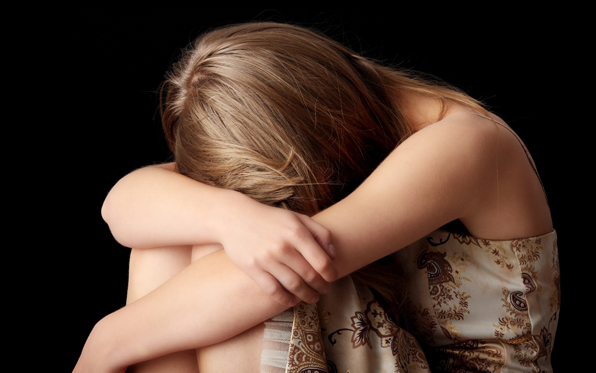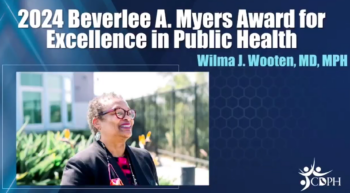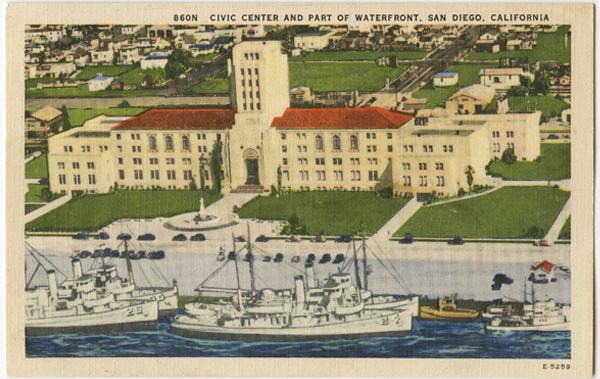Their stories are real. Their names are not. They are still afraid of the men who forced them to be prostitutes.
Krista, Priscilla, and Vanessa shared their stories recently in hopes of saving other girls from the sexual, emotional and physical abuse they endured at the hands of their pimps.
About 100 people listened to the young women’s every word of how they got lured by and were eventually rescued from sex trafficking pimps. The audience was made up of social workers, probation officers, psychologists, educators, and employees of children and youth service organizations who were attending a recent training on human trafficking.
Each young woman’s story was similar to each other’s and not much different than those of the many girls and women working on El Cajon Boulevard and other local streets or motels notorious for prostitution.
Most people who see the young women and girls working the streets know what they are doing. What outsiders don’t know is how the women got there. They don’t know the women are being forced to sell their bodies. They don’t know about the violence they suffer.
Their Stories
Priscilla’s father has been in prison since she was 2. Her mother died when she was 8. At 15, an older cousin sexually molested her. She ran away.
When she was 17, Priscilla met an older guy. He told her she was pretty and that he liked her. Two weeks after meeting him, he told her he was falling in love with her. She went to visit him at his house and never left.
“I felt I was not alone anymore,” said Priscilla, now 20 and the mother of an 11-month-old girl.
Soon after meeting him, the man who said he loved Priscilla began pimping her. He forced her to have sex with other men. If she did not obey, she was beaten. She was choked.
“I thought there was nowhere to go. I was scared,” Priscilla said.
Since she was a child, Krista, 20, was neglected by her drug-addicted parents. In high school, she met a man who promised her a better life. She fell in love with him and the thought of making lots of money.
“Money became the motive for a better tomorrow that I never got to see,” said Krista, who is now a mother of a 1-year-old son.
What she got instead were many beatings and rapes before she ended up in Juvenile Hall.
|
Warning Signs of Sex Trafficking |
|
|
“You need to understand exactly what is happening”
“Violence is the biggest part of this whole crime,” said James “Chappie” Hunter, a San Diego Police Department (SDPD) detective with the Sex Crimes Unit. He was the main presenter at the human trafficking training, sponsored by the Behavioral Health Education and Training Academy, a San Diego County Health and Human Services Agency (HHSA) contractor.
San Diego County is taking an aggressive stand and attacking the sexual exploitation of young girls and children.
At the urging of Supervisor Dianne Jacob, the County Board of Supervisors established the San Diego Regional Trafficking and Commercial Sexual Exploitation of Children Advisory Council made up representatives of law enforcement, victim services organizations, education and community volunteer groups. The County is one of the few jurisdictions in the country that has such a coordinated effort.
The County sponsored the training to educate participants about the local trends and practices of domestic human trafficking and help participants recognize the warning signs of sex trafficking.
When SDPD began to look into domestic human trafficking several years ago, they would see about one case every three to four months. Today, Hunter said, detectives receive about one to three cases per week. The number of cases, Hunter explained, has exploded because of the training that has taken place in his department.
“It’s our own girls in our own back yards who are being pimped out,” Hunter said.
At the beginning of his presentation, Hunter warned the audience what they were about to hear and see would be graphic.
“The language will be harsh and the videos difficult to see, but I am going to show them to you because you need to understand exactly what is happening on the street,” alerted Hunter.
In San Diego, there are between 1,500 and 2,000 juveniles living on the streets. The traffickers know to move fast. Soon after the teens end up on the streets, a trafficker tries to lure them into prostitution.
Ninety-nine percent of the cases he has worked, Hunter said, involve female victims. In the United States, these young girls are lured into prostitution or pornography when they turn 12 or 13 years of age.
| Society’s perception that prostitution is a victimless crime may be the greatest risk factor of all. |
| -Det. James “Chappie” Hunter, San Diego Police Dept. |
Finding girls is easy for pimps. They look on MySpace, Facebook, and other social networks. They and their assistants cruise malls, high schools and middle schools. They pick them up at bus stops. On the trolley. Girl-to-girl recruitment sometimes happens.
“The stuff that I see is out of control. High schools and middle schools are huge right now,” said Hunter. “Society’s perception that prostitution is a victimless crime may be the greatest risk factor of all.”
Finesse vs. Guerrilla Pimp
A pimp, Hunter told the group, can be anyone. But gangs have become notorious for trafficking young women for sex. Money is their motivation and some will even set turf wars aside just so they can pimp their girls in each other’s territory.
“Gangs are what is killing us now,” said Hunter. “It’s an easy way to make money. They’ll rather make money than fight each other.”
Training attendees were surprised to learn there are two types of pimps: finesse and guerrilla.
A finesse pimp courts the girls. He’ll take them shopping, to dinner, to places they have never been before. The courtship will eventually lead to sex. The girl falls in love. When that happens, the pimp will do a 180 degree turn on his victim.
RELATED: Stolen Youth: Fighting Back Against Sex Trafficking
“She’ll do anything for him because she loves him,” Hunter said. “He will get her to do things until he has mentally and physically broken her down.”
A guerrilla pimp on the other hand will attack his victims and beat them up from the start. He and his posse will take everything away from her—her I.D., her money, her phone. He will rape her. His whole posse might rape her. If the victim is still resisting, he will threaten to hurt her family.
“The girls are physically and mentally abused,” he said. “Torture is what keeps these girls working.”
Finesse and guerrilla pimps have two rules: the women are to give them all their money and they will not ever snitch.
“That is what makes my job and your job so difficult,” Hunter said. “They won’t talk because they are scared. They don’t know there are programs where they can get help.”
“I am a survivor”
Throughout the three-hour training, psychologist Roslyn Sanchez took notes. Some the things Hunter talked about, she had heard before. She works at one of the County juvenile facilities and has heard similar stories from the girls there.
“It’s not a surprise to me. We hear a lot from the girls themselves,” said Sanchez.
Still, she said, trainings like these are important.
“They are needed for all of the mental health providers who work with teens and young adults,” Sanchez said.
The issue of human trafficking has come to the forefront in recent years, she said, but “it has been going on for a long time. It’s great to see law enforcement treating these girls as victims, which really helps to get them the services they need.”
The County’s aggressive efforts to fight human trafficking is helping some women escape their tortured lives.
It’s how Priscilla, Krista and Vanessa were rescued and are getting help to recover from their physical and emotional scars. They are now receiving counseling and treatment at San Diego Youth Services, funded in part by the County.
“Exiting can be a very hard experience” said Krista.
Her focus now is continuing her treatment, finishing her education and taking care of her son.
“But if you don’t reach out to anyone, no one will know you need help,” said Krista, who like all of the other women ended her statements with the phrase “I am a survivor!”
Vanessa, 21, is also getting help for the emotional trauma she endured. One crucial change for her is to remove her pimp’s name that is tattooed on her arm.
“He was cruel,” said Vanessa, who ended up abusing drugs and alcohol. She was gang-raped. She said removing the tattoo is painful, but “it’s worth it because every time I see it, it takes me back to the day when I got it.”






